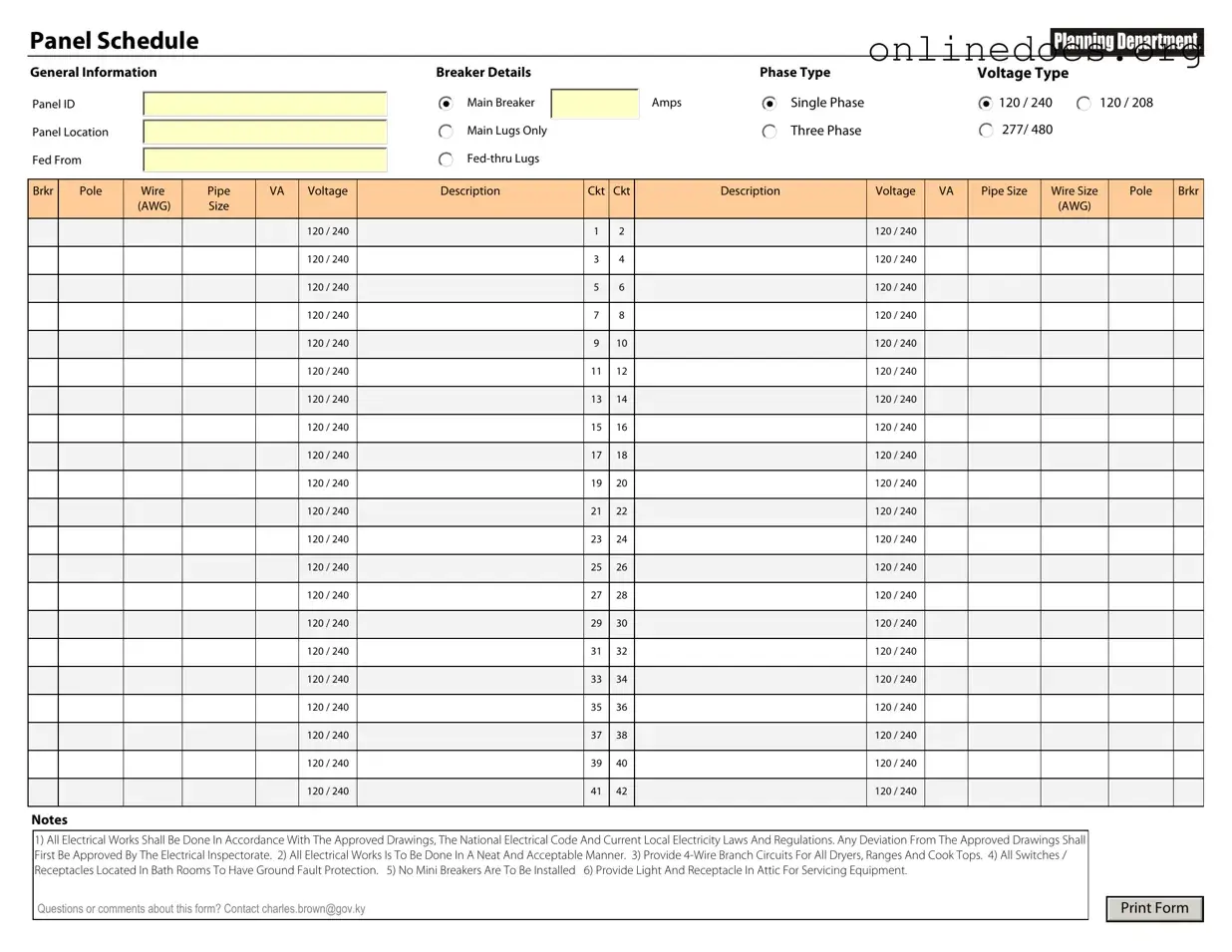Filling out the Electrical Panel Schedule form can be a straightforward task, but many people make common mistakes that can lead to confusion or errors in the electrical system. One frequent mistake is failing to label circuits clearly. Each circuit should have a unique and descriptive name. Without clear labels, it becomes challenging to identify which circuit powers specific areas or devices.
Another common error is not including the correct amperage rating for each circuit. Amperage ratings determine how much electrical current a circuit can safely carry. If the rating is incorrect, it could lead to circuit overloads or failures, posing safety risks.
People often overlook the importance of listing all loads on the schedule. Each circuit should include all devices it serves, along with their respective wattages. Missing loads can result in an inaccurate assessment of the total demand on the panel, which could cause operational issues.
In some cases, individuals forget to update the schedule after making changes to the electrical system. If new circuits are added or existing ones are modified, the schedule must reflect those changes. An outdated schedule can lead to dangerous situations, especially during maintenance or troubleshooting.
Another mistake involves neglecting to indicate the type of circuit. Whether a circuit is dedicated, general-purpose, or a branch circuit should be noted. This information helps electricians and inspectors understand the intended use of each circuit, which is crucial for safety and compliance.
Some people make the error of using inconsistent units of measurement. For example, mixing volts, amps, and watts without clear indicators can create confusion. Consistency is key for clarity and accuracy in the schedule.
Lastly, failing to double-check for typos or inaccuracies can lead to significant problems. A small mistake in a circuit number or load calculation can have serious implications for the entire electrical system. Taking the time to review the form can prevent many of these issues.
